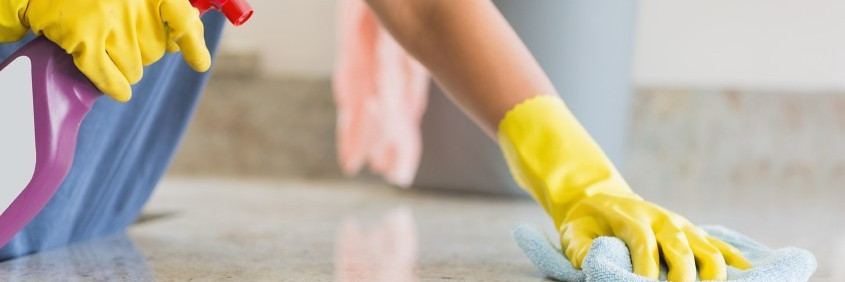
Fresh Rec Stop: How to Keep Your Kitchen Clean
Have you ever wondered if you’re cleaning your kitchen correctly? Think about it: your kitchen sink and sponge do some of the dirtiest work in your house! You can prevent foodborne illnesses and germs from spreading by cleaning where you prepare and consume food regularly and taking proper food safety precautions. Here are some tips and tricks to keeping a clean kitchen:
1. Wash your hands before preparing any food, whether for yourself, your family, or guests. You should wash your hands frequently between preparing items, after touching surfaces, and especially anytime after handling raw meat of any kind. Remember to wash with warm, soapy water up to your forearms for about 20 seconds. Try singing “Happy Birthday” twice or the chorus to your favorite song to help you time it right.
2. Remember to clean and sanitize your sink and food prep surfaces. Cleaning removes dirt and debris while sanitizing reduces the presence of common bacteria like salmonella, norovirus, e. coli, and listeria. Clean with warm, soapy water. You can sanitize your surfaces with some common household products like unscented bleach, hydrogen peroxide, or white distilled vinegar. Dilute just one teaspoon of fragrance-free bleach with a quart of water – bleach is very effective; it doesn’t take much! Let it sit for one minute. If you prefer an alternative to bleach, use undiluted hydrogen peroxide or distilled white vinegar and let it air dry for at least 10 minutes. You can sanitize your kitchen daily if you like, or at the end of the night after dinner for example, to let the solution air dry overnight.
3. Your cutting boards are probably your most used food prep surface. Make sure you are using a separate cutting board for raw meats and another for produce. Wood cutting boards are pretty to look at, but they are porous and must be carefully and immediately handwashed. Plastic cutting boards are the safest option. Remember to clean and sanitize them regularly.
4. Make sure you are keeping raw meat on the lowest part of your refrigerator away from anything else. If a package were to leak, you don’t want it touching your other food. If something in your refrigerator does leak, you should clean and sanitize the area immediately. This can happen often while frozen foods are thawing. Remember to thaw your food in the fridge to maintain safe temperatures and allow the food to cook evenly throughout. Everyone in your house probably touches the refrigerator door handle quite often; clean that regularly too.
5. Clean and sanitize your microwave!
6. A good habit to get into is replacing your kitchen sponge often, or switch to something completely disposable. All good professional kitchens will use disposable paper towels and have their linen towels cleaned every night. Your sponge is a warm, moist, hotbed of bacteria. Don’t use a dirty sponge on clean surfaces!
7. Preparing and cooking your food correctly can reduce the number of germs in your kitchen. Remember to wash all produce even if you intend on peeling it so germs from the outside don’t spread. You can buy a vegetable wash or make your own with distilled white vinegar, but plain warm water typically does the job. DO NOT rinse meat in the sink; this actually spreads germs. Get a food thermometer to make sure you are cooking your food all the way through to safe temperatures: all poultry should be cooked to 165 degrees Fahrenheit, beef and pork to 160 degrees, and fish to 145 degrees.
Following these few simple guidelines will help keep you and your family safe and healthy. If you’d like more details on food safety, handling, and cleaning, I recommend checking out the Center for Disease Control’s website on food safety.
Want to learn more about Fresh Rec Stop and our recipes? Click here to visit chef Philip at a cooking demo near you. Call (727) 892-5994 or email Philip at PRBELCAS@StPete.org for more information.




